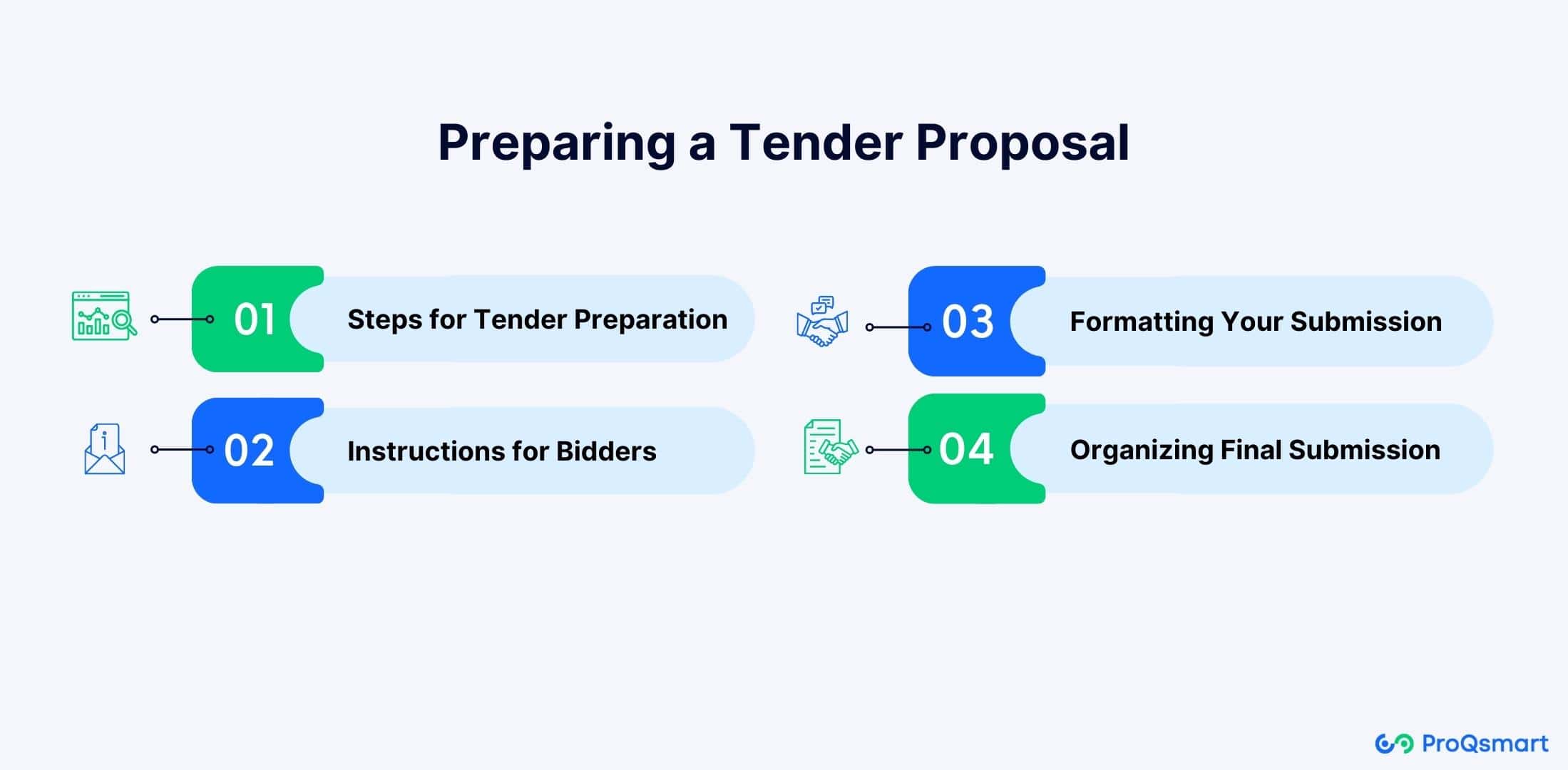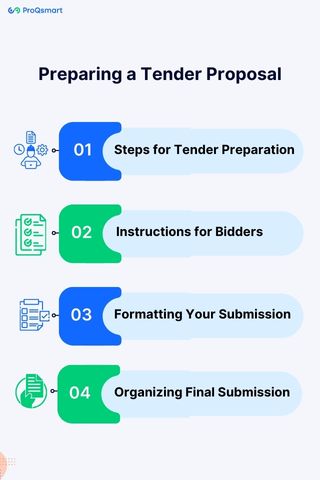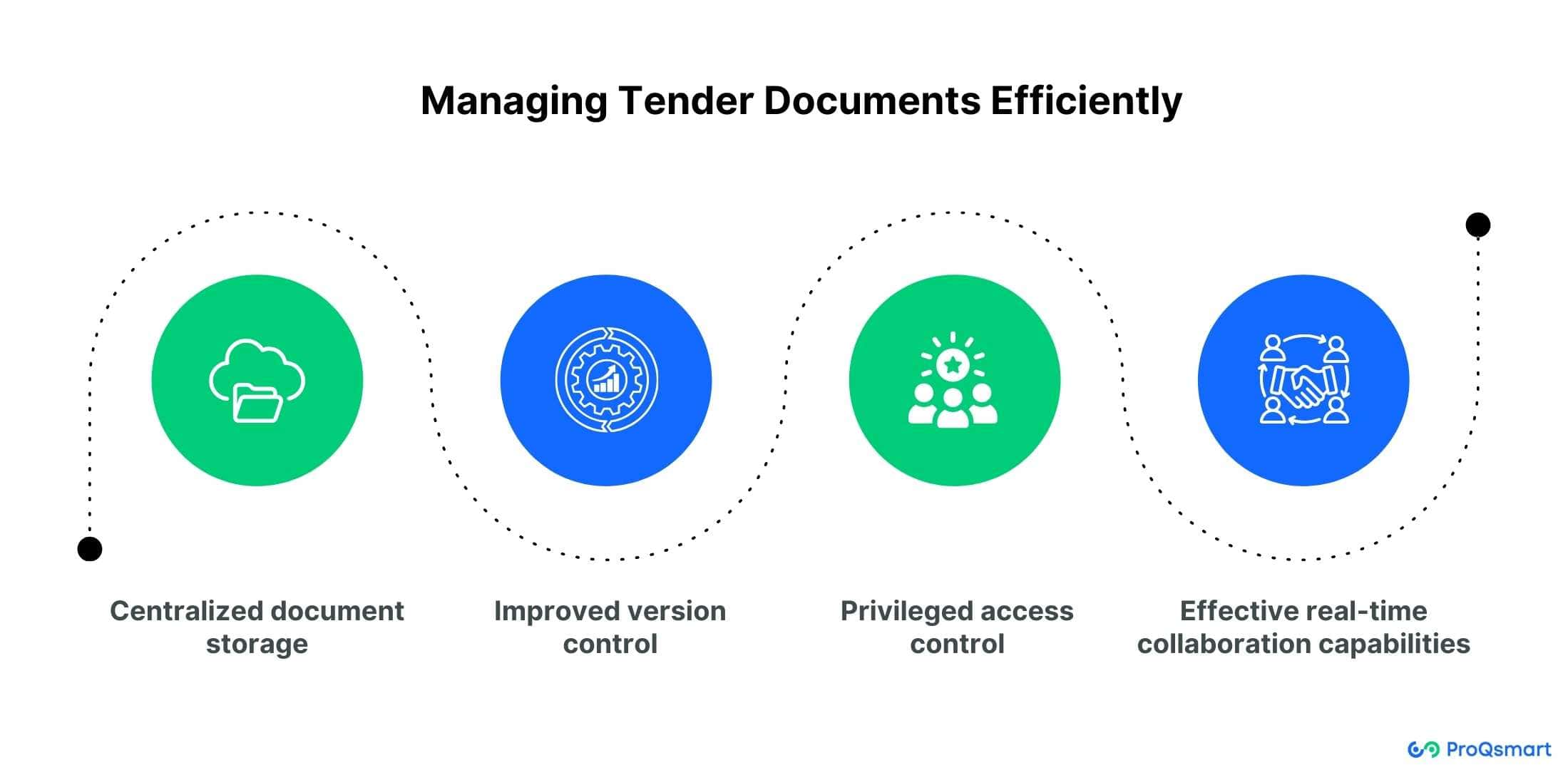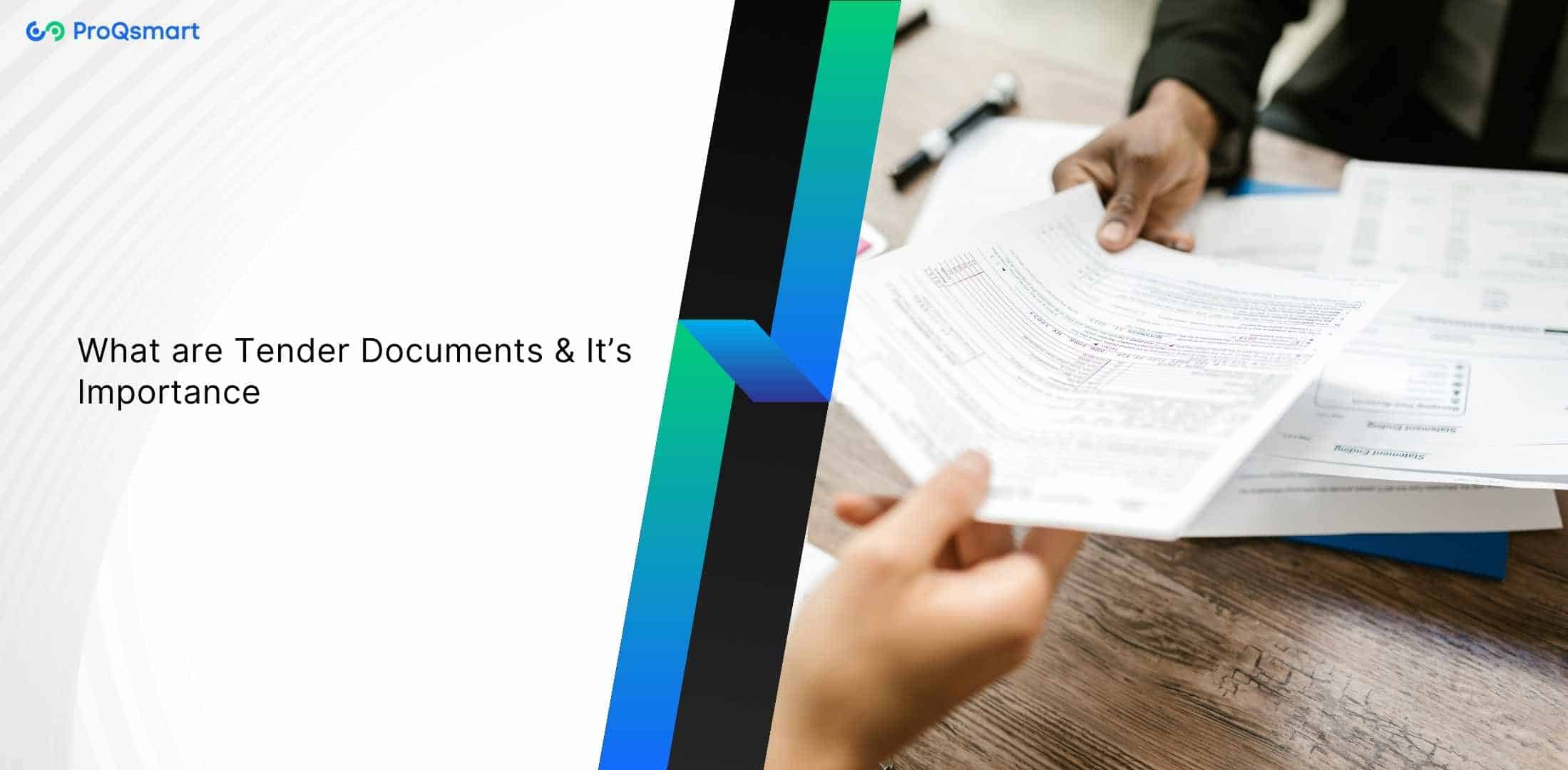Tender documents are critical in the high-stakes competition for projects. In my experience, these planning documents provide a format and workflow for building the compelling narrative and data-focused case that can really sway decision makers.
As the world shifts further into data-driven insights, a commitment to transparency and precision in tender documents will lead to fruitful opportunities. These documents are thoughtfully prepared. They illuminate the technical and financial value, the heart of a winning proposal.
For those of us trying to find our way through the complicated world of bidding on projects, knowing the differences in tender documents is essential. These are more than mere formalities. They are powerful strategic tools that can greatly reshape outcomes across communities and sectors when properly wielded.
Key Takeaways
- Tender documents are critical for drawing competitive bids for construction projects. When done correctly, they provide a formalized approach to vetting and selecting qualified vendors, all while increasing the chance of project success through effective communication and outlined expectations.
- Having a clear grasp of the tendering process helps ensure greater transparency and fairness. Clear and thorough tender documents are important for encouraging market competition and ensuring that vendors can customize their proposals to best fit project needs.
- Provide clarity on key elements of tender documents, such as project requirements, budget ranges and financial expectations, and legal requirements. This will prevent misinterpretations and keep documents in line with industry best practices.
- If you need to develop compelling tender proposals, you need to do your homework. Know your client, prepare your files carefully, and read the instructions to maximize your probability of winning competitive bids.
- Once bids are submitted, a rigorous evaluation process that uses defined criteria identifies winning bids. This underscores the importance of proposals meeting these criteria and the importance of participants learning the feedback to improve their future submissions.
- Using digital solutions such as ProQsmart makes document creation and management smarter and faster. Discover better workflows and optimized power and performance that put you ahead of the tendering process.
What Are Tender Documents

Understanding tender documents is akin to unlocking a crucial element of the construction industry’s bidding process. These bid documents serve as essential instruments for soliciting bids and submissions, forming the foundation for project success. More than mere bureaucratic paperwork, they represent the lifeline for establishing strong, clear, and transparent communication between project owners and potential bidders.
Definition of Tender Documents
Tender documents are a collection of all the required documents that are part of the bidding process. They serve as the foundation for a successful project by clearly detailing project specifications, requirements, and expectations, keeping all parties aligned.
By gaining a better understanding of the most critical terms within these documents, stakeholders can work to prevent misinterpretations. For example, an ironclad definition of the scope of work prevents confusion over what contractors are responsible for.
Purpose of Tendering Process
The tendering process helps ensure vigorous competitive bidding from qualified vendors, ensuring the process is open and fair. This highly developed and competitive process helps maintain both cost-effectiveness and quality assurance.
It’s not an end – it’s a way to achieve project goals efficiently.
Invitation to Tender Overview
An invitation to tender usually details the project scope and timeline, as well as eligibility criteria. Key elements such as these help guarantee that only qualified contractors bid on the job.
An effectively written invitation serves as the foundation for a competitive bidding process, getting everyone—owners, contractors, and subcontractors—on the same page with the project’s goals.
Key Components of Tender Documents


Tender documents serve as the foundation for all projects moving forward, providing the first opportunity to foster a culture of clear communication that leads to a successful project. These tender documentation components include essential elements that bring clarity and precision to the tendering process, allowing us to understand their roles in achieving the optimum effectiveness of the tender submission process.
Category | Components |
Project Information | Timelines, deliverables, project descriptions |
Financial Requirements | Pricing, payment terms, financial transparency |
Legal Frameworks | Contracts, agreements, legal standards, professional certifications |
Policies & Certifications | Safety standards, environmental standards, industry regulations |
Project Information Details
Project information is at the heart of all tender documents, including timelines, expected deliverables, and in-depth project descriptions. These components serve as guiding principles for bidders, allowing them to submit both precise and compelling proposals.
There must be consistency in the project information provided across all documents to prevent any confusion from arising. For example, a clear definition of interfaces between packages makes it easy for two packages to work together. Running through even a short list of FAQs can clarify confounding topics, providing insight that can make the difference for a potential bidder.
Financial Information Requirements
Financial transparency is crucial in tender documents, encompassing pricing, payment terms, and compliance with financial regulations. Bidders must provide detailed financial information to build trust and influence the selection of successful bids.
For example, comprehensive risk assessments and health & safety compliance are vital, as they assure potential bidders of the project’s reliability. Addressing financial transparency can alleviate concerns, given that over half of businesses worry about project delays.
Legal and Professional Framework
Legal documents and frameworks, including contracts and agreements, are required along with tenders. By following legal standards, everyone involved is protected and kept on the right side of the law.
Legal documents and certifications have become integral to the tendering process to ensure compliance, transparency, and credibility. Over time, professional certification requirements were introduced to set benchmarks for expertise and competence. For example, the Chartered Institute of Building (CIOB) Professional Competence in Contract and Commercial Skills (PCCCS) framework applies to Principal Contractors, particularly in large infrastructure projects. These certifications not only validate a bidder’s skills but also provide clients with the assurance that contractors understand their responsibilities and meet industry standards.
Policies and Certifications Needed
Tender documents should list all the usual policies and certifications expected in submissions. These can be safety standards and environmental standards, making sure that bidders abide by industry rules.
Stipulating required certifications strengthens the credibility of proposals and ensures bidders are made aware of important policies. For larger projects, the government’s Remediation Acceleration Plan may be pertinent, guiding tender documents to comply with evolving standards.
Preparing a Tender Proposal


Developing a winning tender proposal is a process of intentional moves, focusing on the necessary specifications and detailed information, with each play adding to the base of a successful submission.
1. Steps for Tender Preparation
The process starts with careful research and document collection. You need to understand your client’s needs before you even start writing your proposal. This helps to make sure that your proposal is in line with their goals and project needs.
When everyone has a hand in writing and shaping a proposal, it’s often higher quality since each team member offers a different perspective and expertise. Good time management is key to efficiency. Tenders are often a daunting process in themselves, sometimes over 30,000 words long and requiring more than four weeks to complete.
Strong communication lines are very important during this time. They help to make sure that the ITT’s process is best suited to answering all questions, enabling us to be as accurate as possible.
2. Instructions for Bidders
Giving them a comprehensive yet simple set of instructions is key. Bidders need these guidelines to prevent misunderstandings and improve the ability of bidders to comply with submission requirements.
Providing a bullet point list of essential guidance increases understanding and reduces the chance for mistakes. This method will best position you for success.
3. Formatting Your Submission
Professionalism comes from producing documents that all have a uniform appearance and formatting. Good formatting helps your overall readability and makes it easier for evaluators to understand your proposal.
Formatting can be tedious, but the impression you leave with attention to detail will be a long-lasting one, showing you care.
4. Organizing Final Submission
A tender checklist guarantees that every single document is accounted for in the final submission. By taking the time to review each component, review omissions can be avoided and ensure a smooth evaluation process.
Clear labeling and indexing of documents allow for easy reference, streamlining evaluation.
Submitting a Tender Response
In the hyper-competitive world of tender submissions, persuasive responses are the name of the game. You need to think about being clear, being precise, and being on point with the tender requirements.
Critical components of a successful tender response include:
- Understanding the project scope,
- Tailoring the proposal to meet client needs, and
- Demonstrating capability through past performance and expertise.
When you submit a bid response on a construction project, emphasize your past experience on similar projects. Prove that you are on-time and under budget to increase your credibility and attractiveness.
Following submission deadlines are of utmost importance. Miss even one of these deadlines and you’ll be disqualified, even if your proposal is the most persuasive. Picture losing a huge opportunity just because the response was one day late.
To counteract this risk, project management tools can be useful in monitoring deadlines and submission timelines. Clear communication with clients is more than polite, it’s imperative. Having a conversation helps to make sure you’re both on the same page in terms of needs and expectations.
Those open lines of communication can further ensure that feedback comes through and allows your team to make adjustments before submission. For instance, having a quality assurance step of confirming receipt of your submission with the client helps make sure they received everything they need, avoiding future headaches.
Another major step is to carefully review submission requirements before submission. Carefully checking all documents and ensuring compliance with the tender specifications can prevent errors that might otherwise lead to rejection.
This careful process demonstrates professionalism and attention to detail, which are prized in the competitive world of bidding.
Response Submission Guidelines
- Ensure submissions are sent through the specified channels, whether digital or physical. Just be sure to follow the tender specifications in terms of format, like PDF or hard copy.
- Following submission guidelines ensures your bid is considered. It is a cutthroat process, and missing even one small detail can disqualify your entire response.
- Always confirm with the client once a submission is sent. This helps eliminate miscommunication by protecting against a failure to acknowledge.
- Retain copies of all submitted documents. This is important both for your own records, and as documentation in case a question arises later.
Ensuring Compliance with Standards
There is no room for compromise on compliance standards for a tender response to even be considered. Developing an understanding of the compliance requirements will help you to not get rejected for not conforming.
For instance, knowing the applicable environmental regulations when developing a proposal for a major construction project can avoid embarrassment—or worse, noncompliance. Following these standards makes you look more professional, proving that you’re a serious bidder.
Regular alerts on compliance regulations are critical to keeping abreast of changes that may impact submissions.
Evaluation and Post-Submission Process
The evaluation process is a critical phase following the submission of tender responses. Typically, a panel of assessors is tasked with reviewing and scoring the bids based on criteria set out in the invitation to tender (ITT). This process ensures that each bid is assessed according to predetermined standards, which may include factors such as price, quality, experience, and innovation.
The Procurement Act further emphasizes these scored sections, intensifying the need for thorough and diligent evaluation. Transparency and fairness are fundamental in this process, guaranteeing that each bidder is treated equally and that the selection of successful bids is based on merit. Clear communication of the evaluation outcomes to all bidders is essential, as it maintains trust and integrity within the process.
Selection Criteria for Tenders
- Price competitiveness
- Quality of the proposal
- Experience and track record
- Innovation and creativity
- Compliance with technical requirements
Post-Submission Evaluation Process
The post-submission evaluation process includes several steps: initial screening, detailed analysis, scoring, and final selection. In reality, robust evaluations are critical in distinguishing the highest value bids. Feedback is a critical component for making future tender submissions more competitive.
Timely evaluations are essential to keeping projects on schedule.
Understanding Feedback Expectations
Giving feedback to unsuccessful bidders is an important part of the post-evaluation process. Each bidder can expect to receive in-depth feedback on the strengths and weaknesses in their proposal’s submission. Constructive critical feedback is an important part of the process and helps improve future proposals.
Common feedback elements include:
- Compliance with requirements
- Quality of documentation
- Alignment with evaluation criteria
Best Practices for Tender Proposals
Creating a winning tender proposal is as much an art as it is a science. You should familiarize yourself with best practices that improve the proposal’s chances of winning. With a greater understanding of what’s at stake, you will be better poised to exceed your client’s expectations.
Providing a tailored response that speaks to exactly what the client needs will set you apart and greatly improve your chances of winning the work. This involves going beyond the technical requirements to even interpreting the nuances of what the client really cares about.
What we have witnessed over and over again is that in submissions, professionalism and clarity trump all else. A well-structured proposal, free from typos, errors, and ambiguities, will present a professional image and work to prevent any potential misunderstandings.
By consistently working to hone your proposal writing abilities, you’ll ensure that each submission is stronger than the one before it. This makes you more competitive on the playing field.
Proofreading and Error Checking
Developing a detailed proofreading checklist is one of the best ways to address this. Writing mistakes can easily detract from the professionalism of a proposal. Proper proofreading can prevent confusion or misunderstanding when proposals are evaluated.
The more team members engaged in a review the better, allowing for thorough checks that help catch errors a single reviewer may overlook.
Communicating Value in Proposals
Effectively communicating value propositions to the person responsible for deciding on your bid’s success is imperative. Clearly articulating your approach and the benefits to the client is vital.
Include these elements to communicate value: client-focused benefits, unique solutions, and long-term advantages.
Clarifying Client Objectives
The process includes tactics like breaking down the request for proposals and asking clarifying questions. Knowing what the client needs means you can tailor your submission to fit their needs.
Maximizing proposals to align with client objectives is the only way to win.
Supporting Presentation Materials
Charts, graphs, and other supporting materials give depth to proposals. Visual aids improve comprehension and engagement.
A professional presentation is a great first impression that highlights the importance and clarity of your proposal.
Challenges and Solutions in Bidding
Common Challenges in Bidding
The bidding process is littered with challenges that will send even the most experienced player off course. Common challenges include tight deadlines that demand quick yet thorough responses. Unclear requirements create ambiguity in submissions, making it difficult to meet expectations.
Inadequate strategic guidance from Subject Matter Experts can hurt the quality of bids and responses. Additionally, the challenges associated with moving through various layers and timelines can strain capacity.
These hurdles can take a toll on the quality of submissions, resulting in missed opportunities and costly mistakes that can hurt their chances of success. Understanding these challenges and knowing how to solve them ahead of time is incredibly important.
Resilience and adaptability are essential, allowing bidders to rapidly re-evaluate their approach and stay focused on delivering the best quality submission even with time pressure.
Strategies to Overcome Challenges
With smart strategies, these challenges can be averted. Transitioning to agile project management practices, bolstered by Bid Management software, can simplify processes and automate repetitive work. This approach efficiently addresses any issues that arise during the bidding process.
From top to bottom, collaboration and communication among team members is key. It ensures that everyone is on board with the direction of the project. Careful planning and preparation, including sourcing previous questions and evaluation scores, makes for more competitive responses.
By being flexible and adjusting to new circumstances, you can increase the chance of success exponentially. Automating workloads can free up time for focusing on core objectives. Tools like Visure Solutions provide traceability to track progress and decisions efficiently.
Governance and approvals processes are streamlined, resulting in greater oversight, fewer mistakes, and more consistency. This comprehensive approach to overcoming challenges can significantly enhance the quality of bids and improve overall outcomes.
How ProQsmart Can Help
ProQsmart is a powerful, yet simple, tender document management solution that helps you create documents with accuracy and efficiency. Perhaps most importantly, it provides a whole suite of digital tools that make the tendering process easy. This way, you can be sure that every detail is handled smoothly and seamlessly.
Using ProQsmart, you experience a frictionless process that not only improves collaboration between all stakeholders, but exponentially increases bidding efficiency.
Managing Tender Documents Efficiently

Strategies for managing climate risk:
- Centralized document storage
- Improved version control
- Privileged access control
- Effective real-time collaboration capabilities
ProQsmart’s digital solutions all but eliminate the risk of lost or misplaced documents. Centralized storage makes this process simple. It provides you with a central hub from which you can access every tender document with the utmost ease.
With its intuitive interface, managing documents has never been easier. Users can easily find and manage their documents with ease.
Automating Workflow Processes
In particular, ProQsmart is strong in automating workflow processes making tender management a smoother, more streamlined and error-free experience. Automation minimizes manual errors when managing contract documents, cutting down on risk and saving significant time and money to keep projects on track.
Additionally, automated reminders and notifications help move projects forward and keep them moving, making it easy to stay on deadline without a hiccup. Constant advancement of workflow processes is key to perfecting the art of tender management and driving improved results.
Conclusion
Tender documents are key to capturing business opportunities. They set the stage for a predictable and orderly competitive bidding process. Once you know what makes them tick, you’re able to write winning proposals. With these insights, you’ll be able to prepare much more effectively and submit with confidence. Bidding challenges are real, but intelligent approaches and technologies such as ProQsmart make the process much smoother. They add both clarity and efficiency. Adopt best practices to get ahead of the pack and anticipate challenges with smart, data-driven responses. So let’s carry these lessons forward as we move further into the competitive bidding environment. Stay focused, continue to educate yourselves, and maximize every bid submitted. Visit our blog for more tips, advice, and stakeholder engagement insights. With the proper knowledge and right tools, you can increase your success.





